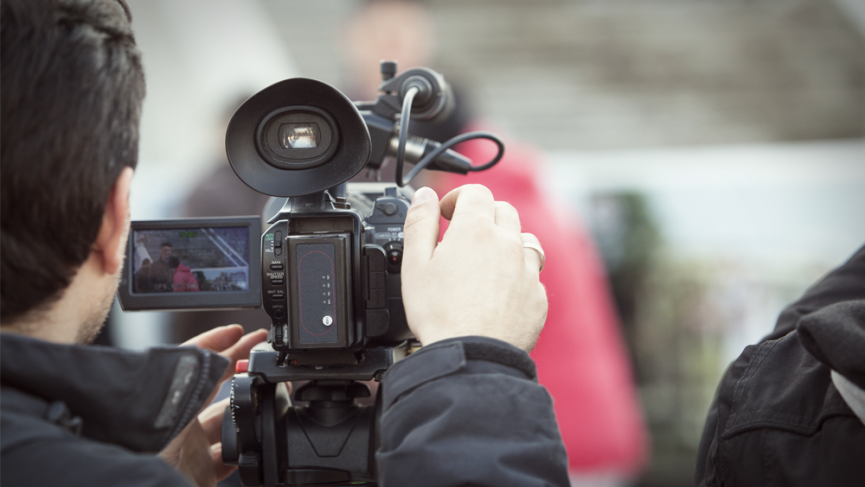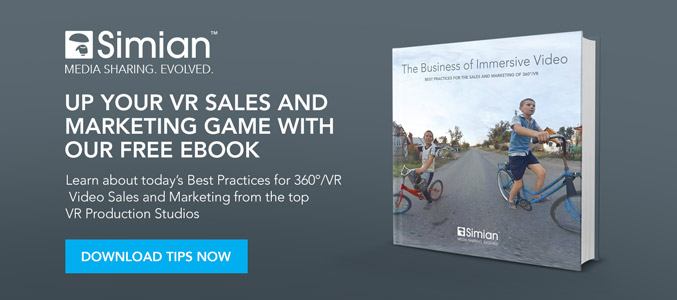Welcome back to Simian’s four-part follow-up series to the launch of our complete 360º/VR support offering. Designed to expose the inside track from the experts on what’s next for 360º/VR video, The Simian VR Download takes a closer look at the current challenges and potential solutions on the horizon.
Last week, the team at VRTÜL shared key insights into today’s 360º/VR video experience. Great info to be sure, but we wanted to dig a little deeper.
Next up, an insider view on the ever-evolving world that is…. 360º/VR video production and post.
About VRTÜL
VRTÜL (pr. Virtual) is a Virtual Reality production studio and content solutions company based in San Diego and Los Angeles; specializing in the supervision, filming and post-production of premium 360 degree Stereo Virtual Reality (VR) content.
Contributors:
Casey Sapp, Founder
Matt DeJohn, Head of Production
Mary Ida Bonadio, Marketing Director
On 360º/VR Video Production
Simian: What production challenges impact 360º/VR video today in terms of directing, shooting, lighting, etc.?
Casey: When it comes to lighting, GoPros are not the best in low light and since most budgets won’t accommodate REDs or A7s right now, natural light is vitally important. There’s some lighting that can be painted out and sometimes we set up knowing that we will need to eliminate it in post production. We can also do that with talent, especially if they're speaking right into the camera. For the most part, if we’re not taking clean plates and painting ourselves out, it’s a simple case of set the camera up and just shoot. If it’s an animal, you just kind of hope that he's gonna do something interesting in a couple minutes, but if it’s talent, you're focused on listening to what they're saying somewhere else and making sure that their audio is coming through correctly. You can't always see what they're doing.
Simian: Any helpful hacks to share when it comes to directing 360º/VR video?
Casey: Yes, absolutely. Our main go-to is clean plating. We use this when we stand in a certain corner where the action isn’t, and then we'll paint ourselves out later. So the reality is, we’re actually in a lot of these shots that are more choreographed, but you would never know that. There is also the ability to communicate through a mic, but very often even with both options, you either have a lot of control being near the camera or you have none at all.
Mary Ida: Another one would be shooting with a drone and the lighting is overhead. We later replace it with a ceiling, sky or the like.
Casey: There are more cameras doing live stitching like the Nokia OZO. It’s a very, very expensive camera that lets you actually see a quick stitch on set. This is vitally important because from our perspective, if the camera fails and we don't know that until we go home at night, then we have to reshoot.
Simian: Does that happen often?
Casey: Just think about it. You have a couple different formats: two 180º lenses and that’s happening with more prosumer stuff, but you're not getting above 4K resolution. The Holy Grail is 4K at 60fps (frames per second). Anything below that and your brain kind of sees jittering and pixilation and graininess. Now, the more that you increase resolution with a six camera GoPro rig, the more opportunity there is for six camera failures and six SD cards that aren't going work. Then when you go to stereo, you're using fourteen cameras.
For example, we just shot with twenty-five cameras for an underwater shot and we built our own rigs. Since there’s no 3D underwater that’s been shown on record, we built our own and if one camera goes out then that’s the end of that shot. It’s a lot of improvisation.
Simian: Are there safety checks you can put into place pre-shoot?
Casey: Yes, there’s a lot of checking involved. You pressure chord, look at all the cameras, make sure they all go off, then look at them again one by one to make sure that the shot happens …THEN, you go back and check again. Things happen in short bursts with checks in between. If there’s a single failure in a SD card or a camera or if the frame rate differs on a camera you changed from one shot to the next, the shot is ruined. It’s a very fragile, sensitive process.
Simian: What about exposure?
Casey: Exposure is tough as well. For example, if the sun is on one side and it's dark on the other side, it makes the camera sync and the color grading very tough in post production. It doesn't make it impossible, but it definitely takes more time.
Simian: Would you say that time is a primary challenge for VR?
Casey: Yes. Even though anything is possible in post production, it’s a matter of how long you actually have in terms of budget to solve an issue. Time is a constant concern for us. How to meet deadlines, solve problems AND deliver a high quality product.
On 360º/VR Video Post Production
Simian: In terms directing, shooting, lighting, etc., what are the production challenges impacting 360º/VR video today?
Casey: First is framing. If you don't frame correctly, the evil word of VR… “parallax” comes into play. Parallax is when someone sits on a seam. If someone is sitting on a seam with half of their body in one camera lens and half in another, we have to go through a whole rotoscoping process through NUKE to put that person back together. This requires time and a very high level of skill. In addition, when framing is wrong, like people walking between the scenes, getting too close to camera, etc., life becomes so much harder on the backend. This makes it tough for production to remain within budget, so there’s a lot of handholding at the beginning and a lot of things that have to go well during each shoot to ensure the cost efficiency vs. quality level of post production.
Matt: Another thing that can be difficult to determine is what the viewers final field of view will be when using a headset. Also, VFX generally requires more CPU time given the 360º field of view and 4K resolution. In addition, the match-move process can be more complex and demanding than some traditional 2D shots. All of this said, in my opinion, the biggest post production challenge is definitely the stitching and stereo correction process. This is a substantial VFX process of blending between cameras. As Casey said, his process can often require rotoscoping and paint to solve all seam issues, so the time investment can be significant. This complexity is amplified when shooting in stereoscopic 3D.
Simian: What about client review?
Casey: Simian has been a great tool for us in working with agencies and bidding on projects. We are really happy using them as our go-to tool for 360º/VR Video sharing.
Simian: So in reality, post production starts up front?
Casey: It absolutely does. It starts from the second you turn the cameras on.
We’d like to extend a BIG thanks to VRTÜL for their insights into this ever-growing video industry trend. We hope you learned as much from our first two installments of The VR Download as we did.
Stay tuned for installment three with B-Reel Films – there’s much more awesome info to come!
Have a question or some great feedback to share? Let us know on Twitter or Facebook – we’d love to hear from you!
MORE FROM THE SIMIAN BLOG

Up Your Game with Microsites
An industry first, Simian Microsites not only offer creative, marketing, advertising and production teams a better wa...

Cannes Lions Survival Guide
The countdown to Cannes is on! Once again, we feel it is our civic duty to help onboard newbies and enlighten crafty ...

What Makes a Great Director?
As a video production company, wouldn’t it be great to hear straight from the leading executive producers and manag...



